William Willner RPB, FBPA
This paper, the first of two parts, is concerned primarily with the procedures established for the movement of digital assets within the department of Biomedical Communications, Wake Forest University School of Medicine. A more thorough discussion of digital asset management as it relates to electronic work flow will be the subject of Part II.
Introduction
Storing and retrieving images has always been a frustrating and time-consuming endeavor. In the past, slides, negatives, and prints had to be stored in a fashion that would ensure no change to their physical characteristics over time. Today, most images are created electronically and stored as files on a computer system. While the risk of physical changes and damage is near non-existent with electronic assets, storing and retrieving image files, in general, is not much easier than it was with their film-based counterparts. A standardized system of strictly-adhered-to procedures is the only way to make certain that the image files stored today may be easily retrieved tomorrow.
System Overview
The system used at Wake Forest School of Medicine can be broken into four interrelated tasks:
- Collecting images
- Naming images using standard nomenclature
- Categorizing image files into three standardized groups
- Captioning each image using standard terminology
This system currently has about 50,000 records spread over nine databases, representing 34 GB of on-line, and 111 GB of off-line stored image files. We define asset management as those tasks required to label and classify images so that they and any associated information are easily retrievable. We use Cumulus 5.5 (www.canto.com) and Rename 1.4a (www.1-4a.com (www.1-4a.com) for this purpose. The end product is a series of catalogs, each of which contains a thumbnail of the original photograph, image annotation information, and user-applied categories that relate to image content.
Electronic work flow is defined as movement of files from initial capture to final archive. We use Cumulus 5.5 and Adobe Photoshop (www.adobe.com) for these tasks. Our department is server centric. All images are saved on a server. Only programs reside on local machines. Substituting “folder” for “volume” would allow a non-server-based department to implement a similar scheme.
A brief overview of file movement and server structure follows:
| Raw Volume |
All camera files except portraits and medical images* are saved on this server volume. A single Cumulus catalog is made from these images |
* Immediately after a portrait sitting, the client reviews and chooses his or her portrait. The final image is saved in the portrait folder. There is a corresponding Cumulus catalog of portraits. The card is wiped clean after the image is chosen. All medical images are processed in Adobe Photoshop and delivered to the requesting physician. No copies are kept within the department.) |
|
Working Volume |
Edited subsets of raw files, which are typically layered Photoshop files, are saved in one of the following folders on the working volume;
Cumulus and Photoshop are used in concert to edit the raw file images and save them to their appropriate folders. |
Archive Volume |
All the files from working folders are flattened, and saved as JEPGs in one of the following folders on the archive volume:
Each of these folders has a unique Cumulus catalog. (Part II will deal more completely on the subject of these catalogs and the role they play in digital asset management.) |
Raw Volume Files
After a photographer returns from an assignment, images are renamed, copied to the server, cataloged, and captioned. An assignment is not considered complete until all these tasks are performed. A detailed description follows.
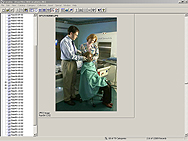 Figure 1. The large 512 x 521 pixel thumbnail is large enough (in most
cases) to allow for an image edit. The image is labeled SP121102069; a
special procedure photograph made December 11, 2002.
Figure 1. The large 512 x 521 pixel thumbnail is large enough (in most
cases) to allow for an image edit. The image is labeled SP121102069; a
special procedure photograph made December 11, 2002.
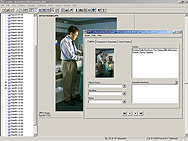 Figure 2. Cumulus Caption field is shown with caption added. Cumulus
writes this information back to the file’s IPTC header. In addition
to caption information, it is also possible to save information related
to credits, bylines, caption writer, copyright, date/time, and location
in the IPTC header. We use only the caption field.
Figure 2. Cumulus Caption field is shown with caption added. Cumulus
writes this information back to the file’s IPTC header. In addition
to caption information, it is also possible to save information related
to credits, bylines, caption writer, copyright, date/time, and location
in the IPTC header. We use only the caption field.
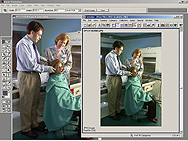 Figure 3. Cumulus is opened over Photoshop. Dragging the thumbnail
from Cumulus to Photoshop opens the file in that application. The Cumulus
thumbnails are large enough to perform a rough edit. Final edit decisions
are made from the files opened in Photoshop.
Figure 3. Cumulus is opened over Photoshop. Dragging the thumbnail
from Cumulus to Photoshop opens the file in that application. The Cumulus
thumbnails are large enough to perform a rough edit. Final edit decisions
are made from the files opened in Photoshop.
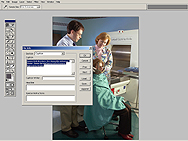 Figure 4. Photoshop is able to read the IPTC header. File - File Info displays this information.
Figure 4. Photoshop is able to read the IPTC header. File - File Info displays this information.
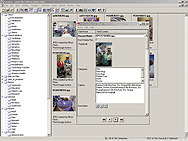 Figure 5. This screen grab is of the image archive database. The right
portion shows the Cumulus asset information screen. Notice that the database
is set to capture IPTC captioning information. The asset information screen
also displays those categories that are unique to this image. These categories
are chosen from the complete category list shown on the left (see also
in Table 2).
Figure 5. This screen grab is of the image archive database. The right
portion shows the Cumulus asset information screen. Notice that the database
is set to capture IPTC captioning information. The asset information screen
also displays those categories that are unique to this image. These categories
are chosen from the complete category list shown on the left (see also
in Table 2).
Renaming
Files are renamed using Rename 1.4a according to the following scheme:
Alpha Alpha, Date, Sequential Number (AAmmddyy##)
The two-letter alpha represents a broad categorization of the image’s subject. All of our categories are listed in Table I. This naming scheme ensures that all file names are unique. Also, and just as important, the file name provides some information about the image. For example, an image named PE100202107 is an environmental portrait shot on October 2, 2002.
The specific categories one uses are not important. What is important, however, is to have enough categories to ensure some separation of images, but not so many that it becomes difficult to decide into which category an image belongs.
Copying to, and Retrieving, from the Server
All camera files, except portraits and medical images, are saved on the “Raw Files 2004” server volume (There also were volumes labeled Raw Files 2003, Raw Files 2002, etc.). Absolutely everything is saved. We do not allow any “in camera” editing. If an image is on a card, it will be copied to the server.
The raw file volume is subdivided into a series of folders named Raw##-mm-yy (e.g, Raw01-01-04, Raw02-01-04, Raw03-02-04). This sequence ensures uniqueness of the folder name. We reset the folder number (##) to 01 on January 1. Each folder is limited to 650 MB. If the images on a card force the folder size above 650 MB, a new folder is started (Raw ##+1-mm-yy). We try not to split an assignment between folders.
The images in the raw file folders are written monthly to CD, and the images on the server are deleted. The CDs are labeled with the corresponding folder name (e.g., Raw##-mm-yy). This is usually done two months after the images are taken; (May’s images, for instance, are written to CD in July. This is probably one of the most important image database management tasks we perform. Regardless of the amount of hard drive storage you have, eventually that space will be filled. A plan for the removal of on-line images is vital.
Cataloging (the First Cumulus Catalog)
All camera files from the server volume “Raw Files 2004” are cataloged in a single Cumulus catalog named “Raw Files 2004” (We also have catalogs “Raw Files 2003 and Raw Files 2002”). We have forced Cumulus to make larger than normal, 512 x 512 pixel, thumbnails (Catalog - Properties - General - Thumbnail Size 512). It is easy to do a first-image edit with thumbnails of this size (Figure 1).
Captioning
After cataloging, file annotation information is added to the Cumulus caption field (Figure 2). Cumulus 5.5 writes the captioning information back to the file's IPTC (International Press Telecommunications Council) header. The captioning information actually becomes a part of the file, travels with the file, and is accessible through Photoshop (File - File Info) (Figure 3). Consequently, images sent electronically to editors or designers will have captioning information available. This is a major advantage of Cumulus. Since the captioning information travels with the image file, the possibility of incorrectly labeling image content is significantly reduced.
The caption is a searchable Cumulus field. This information, combined with the categories contained in the file name, allows for an easily searched database.
Working Volume Files
The raw file catalog is opened over Photoshop (Figure 4). The Cumulus thumbnails are large enough to allow for a rough image edit. Dragging a thumbnail from Cumulus to Photoshop opens the original file (“asset” in Cumulus parlance). Final image selections are made from those files opened in Photoshop.
As soon as the edit is complete, selected images are saved as .psd files to the working volume of the server into one of the following folders:.
- Digital Images to be Cataloged (brochure and other publication photos)
- Digital Infinity to be Cataloged (grip and grins)
- Group Photos to be Cataloged
Standard image correction routines are applied to the saved photographs. These images reside here until they have been used for their primary purposes. Usually, the images are used within a month.
Archive Volume Files
The “to be cataloged” folders are swept monthly. All the images that have been used for their primary purposes are opened in Photoshop, flattened, and saved as JPEGs in a corresponding set of folders (image archive, infinity archive, group photo archive) on the archive volume of the server. Each of these folders has a matching Cumulus catalog, which is also updated monthly. These catalogs are set to capture the caption information in the image’s IPTC header. Only the image archive catalog requires any additional work. These photographs receive a more complete categorization (Figure 5). Table 2 provides a list of our categories.
As department archivist, I am the only one with write rights to the archive volume. All others within the department have read-only rights. This limitation prevents accidental overwriting of archived images.
Summary
Since a relatively high percentage of photographs taken today are electronic, a different strategy must be used for storage and retrieval of these images than that which was used for their silver-based counterparts. Archiving software, such as Cumulus, allows for the creation of databases to help facilitate the management of these digital assets.
Table 1. Image Categories
| AD | Administration |
| AE | Aegis |
| AS | Auxiliary Health Services |
| BI | Building Interiors |
| BL | Buildings |
| BP | Background/Patterns |
| CS | Community Service |
| DN | Dentistry |
| ED | Emergency Department |
| LS | Life Styles |
| NC | North Carolina |
| NR | Nursing |
| OC | Off Campus |
| OR | Operating Room |
| PC | Patient Care |
| PS | Portrait Studio |
| QC | Qualchoice |
| RD | Radiology |
| RE | Religion |
| RS | Research |
| SD | Studio |
| SE | Special Events |
| SP | Special Procedures |
| ST | Student |
| TE | Teaching |
| WF | Wake Forest |
| WS | Winston Salem |
Table 2. Cumulus Categories
| Client | Patient | ||
|---|---|---|---|
| Development | Adult | ||
| PAL | Female | ||
| PR&M | Male | ||
| Qualchoice | Neonate | ||
| Visions | Pediatric | ||
| Senior | |||
| Clinical Initiative | Teen | ||
| Cardiology | |||
| Emergency | Provider | ||
| Geriatrics | Administration | ||
| Neurology | Allied Health | ||
| Nutrition | Chaplin | ||
| Oncology | Clerical | ||
| Pediatrics | Dentist | ||
| Primary Care | Doctor | ||
| Rehabilitation | Nurse | ||
| Technology Transfer | P.A. | ||
| Transplantation | P.H.D. | ||
| Women's Health | Technician | ||
| Volunteer | |||
| Mission | |||
| Community | Student | ||
| Education | Graduate | ||
| Patient Care | Medical | ||
| Research | Resident | ||
| Undergraduate | |||
| Network | |||
| Aegis | |||
| Qualchoice | |||
Will Willner (wwilner@wfubmc.edu)
holds degrees from Case Western Reserve University, Clark University,
and the Rochester Institute of Technology. He is a faculty member and
Coordinator of Photography at Wake Forest University School of Medicine.
He also is an instructor of photography at the North Carolina School of
the Arts. Willner is a Registered Biological Photographer and Fellow of
the BioCommunications Association.